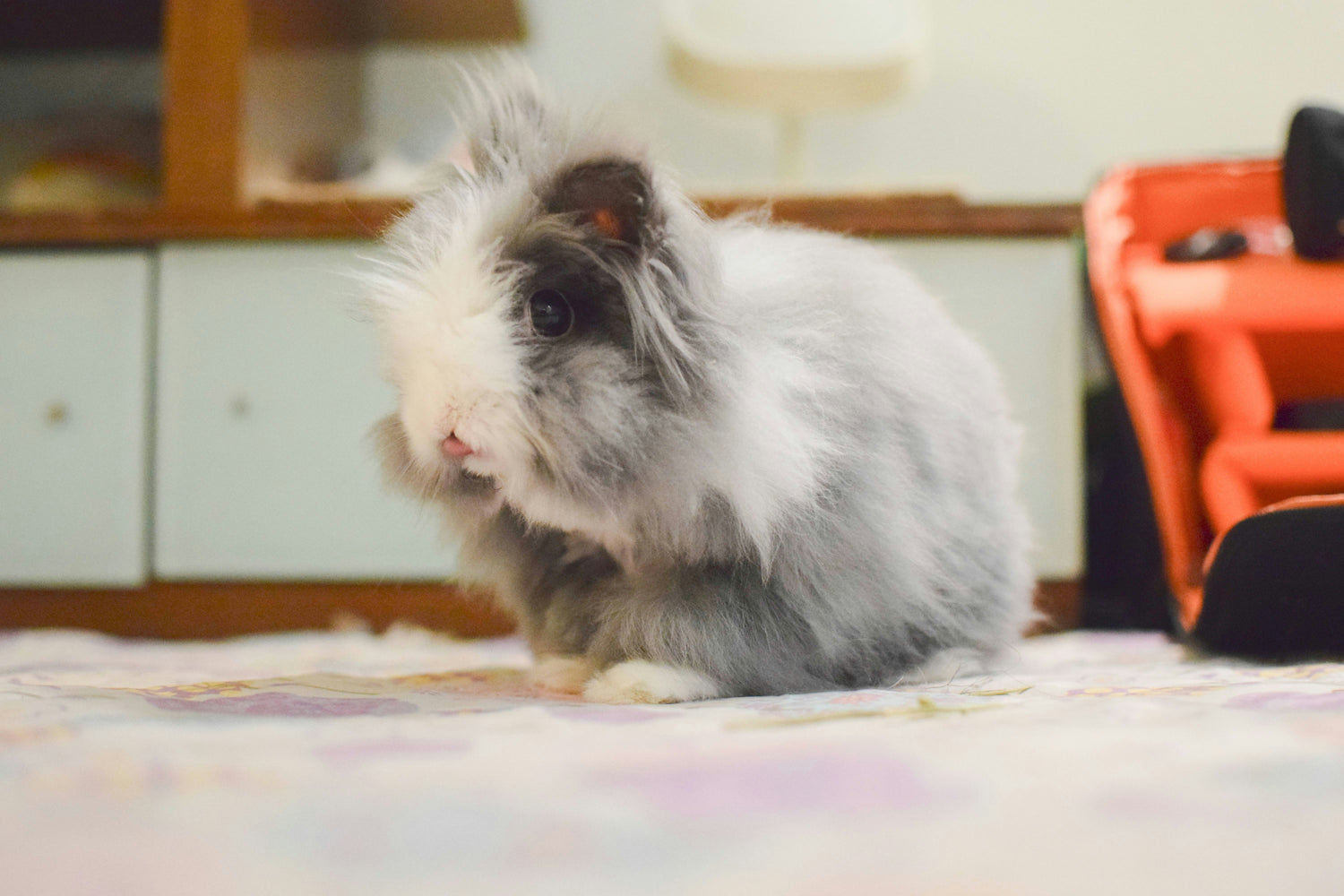
Care Guide Basics
Basic Feeding Requirements
Rabbits were made to live on a diet composed of large quantities of grasses and leaves. They have a very complex digestive system, which can break down large amounts of fibre and extract the nutrients required for healthy body function. These days there are so many different commercial diets on the market, however some are much more suitable for rabbits than others. We recommend the following feeding guidelines for happy and healthy rabbits:
- Water: Unlimited access to fresh water
- Hay: Unlimited amounts of grass hay should be offered on a daily basis. Alfalfa is suitable for young rabbits, but adults should eat only grass hays, such as timothy, orchard grass, oat, or meadow. Hay should make up about 85-90% of their diet. Long strands of grass and hay is also great for dental health, keeping the teeth worn and preventing them from overgrowing and causing further health issues.
- Pellets: Small amount fed daily to provide additional extra fibre, vitamins and minerals. We recommend a high quality pellet such as BURGESS, OXBOW or BUNNY NATURE. Avoid pellets that are marketed for multiple species such as rabbits and guinea pigs, as they have different nutritional requirements. We also recommend avoiding diets with high grain and seed content, as these can be high in fat and low in vital nutrients.
- Vegetables: 1 cup of fresh vegetables per 2kg body weight daily. Examples of recommended vegetables include mustard greens, parsley, snow peas, romaine lettuce, dandelion greens and flowers, basil, bok choy, broccoli, carrot, celery, capsicum.
- Fruits can be a delicious treat, however should be fed sparingly as they are often very high in sugar. Some examples of safe fruits to feed including apples, blueberries, melon, strawberries, papaya and banana
Never Feed
Apple pips, avocado, potato, rhubarb, tomato leaves and stems, garlic, onion, shallots, chives, ivy, primrose, nuts, oats, cereals, chocolate, bread, seeds, wheat, any plant that grows from a bulb – these plants are all potentially toxic to rabbits.
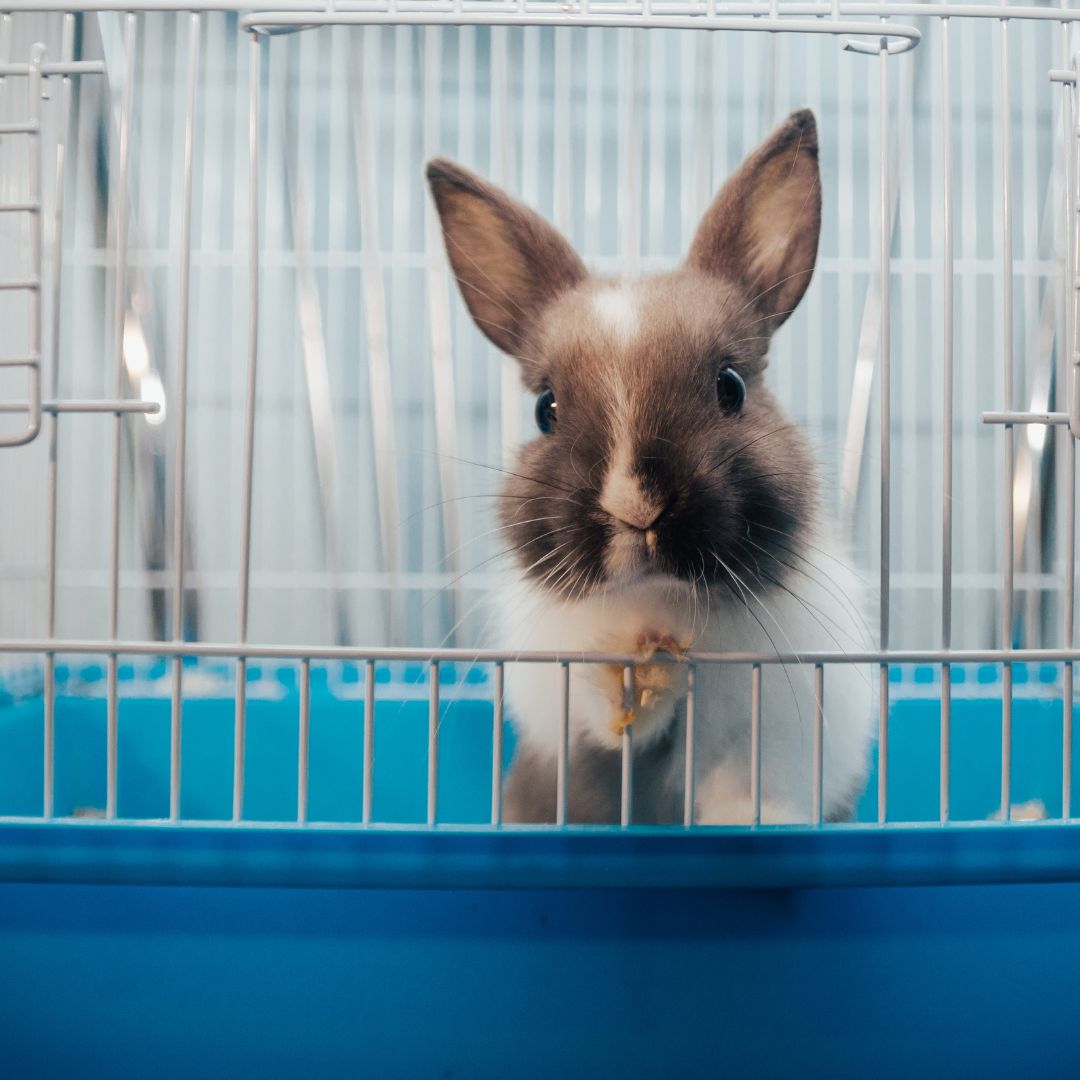
HOW TO SET UP YOUR HOUSE FOR YOUR RABBITS
LIVING SPACE
Bringing a new bunny into the family is always such an exciting time, however before bringing them home we have to ensure they have an appropriate living space awaiting them. Cages are not a home in itself, but a part of a more extensive housing plan. Ideally each rabbit household should have a large cage like enclosure to provide a space to retreat to for some quiet down time or a safe haven for rabbits to return to if they should feel threatened.
We recommend against cages with a wire floor as it is easy to rip toenails and injure feet, as well as predispose to conditions such as bumblefoot. It is also important to have a cage set up to contain our pet bunnies if it is dangerous for them to be out, or to isolate and contain a sick or unwell rabbit – For example a bunny with a back injury will be required to be confined as it heals. The ideal size for any kind of confined space is approximately 3-4x the length of a stretched out adult rabbit – this means that larger breeds will require more space. It is also an important factor to keep in mind when adopting a baby bunny, and keeping their predicted adult size in mind when setting up their cage.
The second part of rabbit housing generally involves a larger pen or space, often involving some free roaming of the house or allocated rooms. This larger space should contain ramps, tunnels, toys and exercise equipment to keep our bunnies healthy and entertained. Boredom or lack of space can lead to further issues such as overeating and obesity, lack of exercise, digestive problems and destructive behaviours. Rabbits love to chew and if you don’t want them chewing on your favourite piece of furniture it is important to provide them with lots of things they CAN chew such as toys, cardboard or hay, to avoid unwanted gnawing behaviours.
Rabbit proofing your house: If you are allowing your bunny to free roam the house it is important to ensure that all immediate dangers have been removed. One of the most common and immediate dangers to pet rabbits inside are electrical cords as rabbits LOVE to chew them! This can lead to cardiogenic shock. We recommend restricting all access to electrical cords, blocking off cords and outlets, or encasing the cords in a heavy-duty plastic. Carpet is another little known threat to rabbits that can have life threatening impacts if chewed – rabbits have been known to chew and ingest large quantities of carpet fibres, which can obstruct their digestive tract requiring life saving surgery. Also checking any household plants to ensure they are not toxic to rabbits, and if you have any favourite plants you don’t want chewed consider moving them to a higher area.
When allowing your new rabbit to roam for the first few times it is important to supervise them until they get used to their surroundings. Young and more athletic rabbits will try and jump over, under and inside furniture which may cause injury if they get suck.
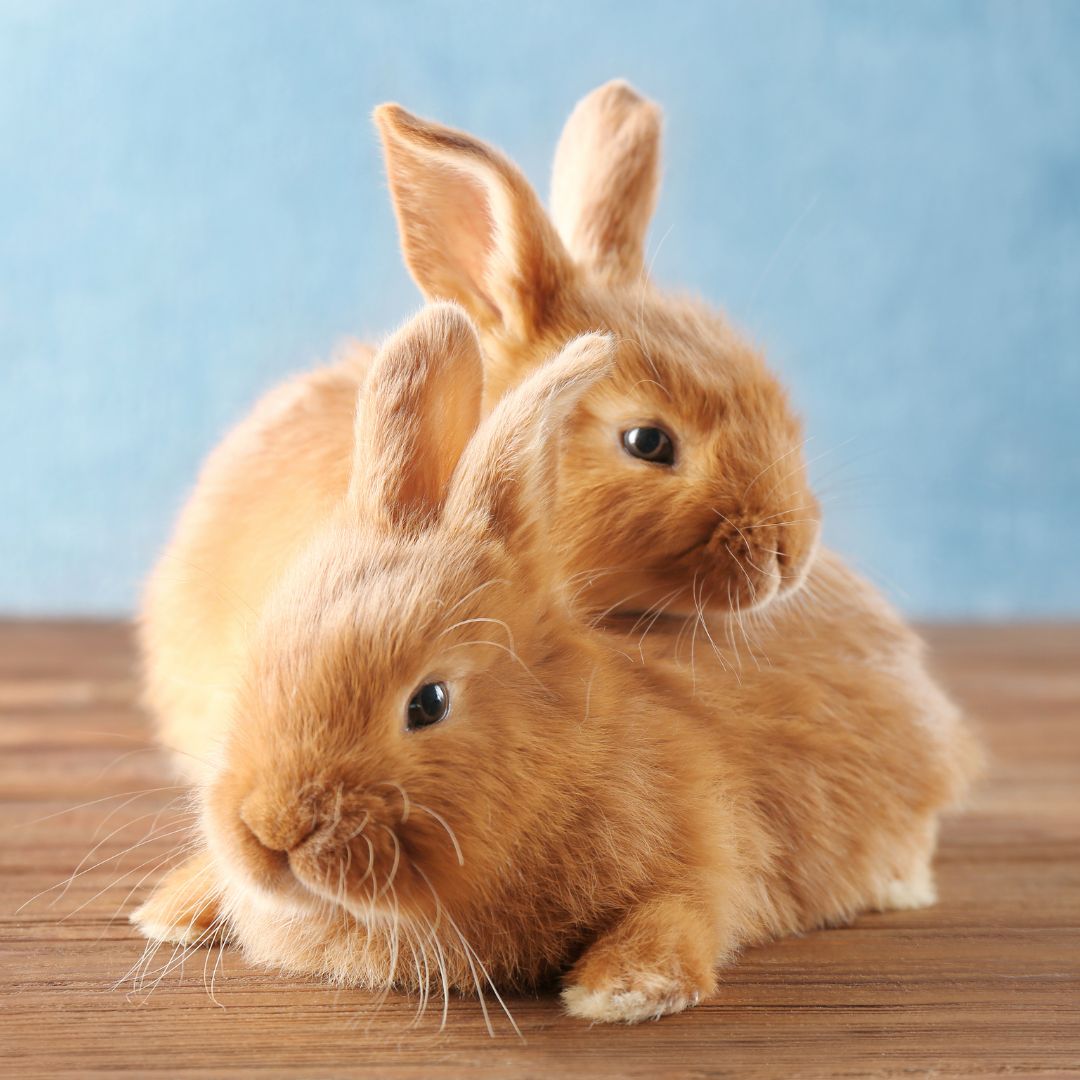
Companionship
Rabbits are very social animals and often crave the companionship of a bunny friend. Bonded rabbits develop very strong bonds, spending their days grooming each other, sleeping, eating and playing together, as well as supporting and protecting each other from any perceived dangers. Having a bunny friend will also help to keep them both entertained and mentally stimulated, reducing boredom and therefore destructive behaviours, as well as preventing them becoming bored, lonely and depressed which can result in a number of other health issues.
It's important to note that not all rabbits will become friends. Many rabbit rescues will have bonded pairs available that are ready to be adopted together, so the introduction process is already done for you! If you are introducing a new bunny to the family with a pre-existing bunny, the initial introduction should be done in a slow and controlled manner. It may take some time for your bunnies to get to know each other and supervision is required to avoid any territorial fights.
Rabbits will grieve the loss of a friend, so after a period of mourning we recommend always keeping them in pairs with a buddy.
Grooming & Nail Trimming
Rabbits are generally very clean animals who pride themselves on their immaculate grooming behaviours – however as a rabbit owner we do still have a responsibility to maintain their coat and keep them healthy. Different breeds of rabbits have different maintenance requirements, but generally speaking long hair breeds have a much higher maintenance schedule than their short haired friends.
Long hair breeds require daily coat maintenance, however even short hair breeds require a weekly brushing and grooming routine to help maintain their coat and remove any loose hair. Some rabbits will find brushing, grooming and just handling in general a very stressful experience, so it is important to provide positive reinforcement during the process and start as young as possible to get them used to the process.
Rabbits have very fine hair, so we recommend using a wide tooth comb to start with, followed by a fine-toothed comb, and finishing with a flea comb in the more intricate areas such as between the ears, under the chin and around the anus. Some people choose to clip their long hair breeds to ease the maintenance requirements, or trim the long hair with scissors that is at higher risk of getting soiled such as around the anus or scent glands. Using a soft brush may make the outer top layer of the coat look shiny and luscious, however these types of brushes often do not get through the entire coat and the under layers close to the skin may become matted. If your rabbits hair does become matted it is important to be extremely gentle and delicate when combing them out. Rabbit skin is very sensitive and easily injured. There are special tools available such as a mat splitter or mat rake that can make the process easier. In severe cases it may be best to visit a veterinary practice for the matts to be removed whilst anaesthetised.
Rabbits shed their hair every 3 months, some sheds being heavier or lighter than others, and during this time may have higher grooming requirements. Rabbits love to groom themselves to stay clean and tidy, however if they have lots of loose hair that is not removed via brushing, they will lick and ingest these hairballs potentially leading to GIT obstruction requiring surgery, or death if not treated.
Rabbits have scent glands under their chin and around their anus that can sometimes develop a brown build up of oily discharge. Using a wet Q-tip is a useful way of wiping and cleaning away any excess build up. Most rabbits do not enjoy getting wet (some do!), so having a bath can be a very stressful time for our bunnies – if they do struggle and kick they can easily injure themselves, so as long as they are kept in a clean and sanitary environment with a regular grooming routine, rabbits do not usually require bathing with water. Rabbits are also very susceptible to hypothermia, so if bathing is necessary, it is important to keep them nice and warm during and afterwards.
As well as maintaining their coat, rabbits require regular maintenance of their nails. They can grow very long and sharp – particularly if they are not running, digging and burrowing as they would in the wild to naturally wear them down. Long nails can become very uncomfortable for our bunnies and cause gait abnormalities or issues with their paw pads. If you are unsure about how far to trim your rabbits nails we recommend taking small amounts, frequently. Dark coloured nails can be more difficult to see the quick then pink nails. If you do happen to cut the nail too short and the quick bleeds, styptic powder is available from most pet shops to coagulate the bleeding. Most veterinary clinics or rabbit rescues will be able to assist you with nail trimming.

Outdoors vs. Indoors
Historically rabbits have been both Indoor and Outdoor pets – however over recent years we have seen a huge shift towards indoor housing as we become more educated about the health benefits of keeping our pets safe indoors and away from the unpredictable dangers of outdoor living.
It has been found that indoor rabbits generally have a longer lifespan than those that live outdoors due to being kept in a safer and more controlled environment, with regular human interaction, a stronger bond, and more prompt medical care.
- Safety: One of the primary benefits of indoor housing is it keeps our pet bunnies much safer. The great outdoors poses many potential dangers including predators such as domestic cats and dogs, as well as wildlife such as snakes, birds of prey, foxes and wild cats that can cause significant harm to our rabbits. Having a hutch doesn’t necessarily stop these predators from entering through the mesh or knocking the cage over. Even if the predator does not gain access to our pet rabbits, just coming into contact with them can cause extreme stress to our pets. As rabbits are prey animals, any signs of danger will automatically send them into their ‘fight or flight’ response with nowhere to escape. In some cases a scared rabbit will run back and forth or thrash trying to get away which could risk injuring itself or even the old saying ‘dying of fright’. Even if not severe at the time, small puncture wounds, bites or claw marks can become infected and potentially result in delayed fatality. Most predators are nocturnal species, most active at dusk and dawn, so if you do decide to keep your rabbits outside during the day, we HIGHLY recommend bringing them indoors at night time during the highest risk of predator attacks.
- Environmental risk: Indoor housing allows for a controlled environment and temperature. Rabbits are extremely sensitive to harsh changes in temperature, and heat stroke or hypothermia can be life threatening. Unfortunately sometimes the weather and mother nature can be unpredictable, which means our pet rabbits are often exposed to the ever changing elements. Finding an outdoor area to house our pet rabbits that remains in the shade throughout the entire day as the sun moves can also be a challenge – what is shady in the morning when we leave home may be in direct sunlight throughout the day. Other environmental risks that outdoor rabbits may be exposed to include things like toxic plants, pesticides, and Rabbit Haemorrhagic Disease virus (RHDV).
- Health: Keeping our pets indoors generally allows for closer monitoring and early detection of any changes in their behaviour, appetite or bathroom habits. It is often easier to pick up on changes in urination or defecation during regular cage cleans and maintenance, as well as monitoring how much food is offered and eaten each day.
- Socialisation: Indoor bunnies tend to be much more socialised and more comfortable around human interaction. As a generalisation, indoor rabbits spend more time interacting with their human family, and can be often found lazing around watching tv of the evenings or waiting for vegetable scraps whilst preparing dinner. Just living in the same vicinity as humans creates a stronger bond for our bunnies as they get used to human behaviour and interaction, as opposed to spending most of their time outside in a hutch.
- Parasites: Indoor rabbits have a much lower risk of contracting various different parasites, including fleas and mites, as well as more severe burdens such as becoming fly blown.
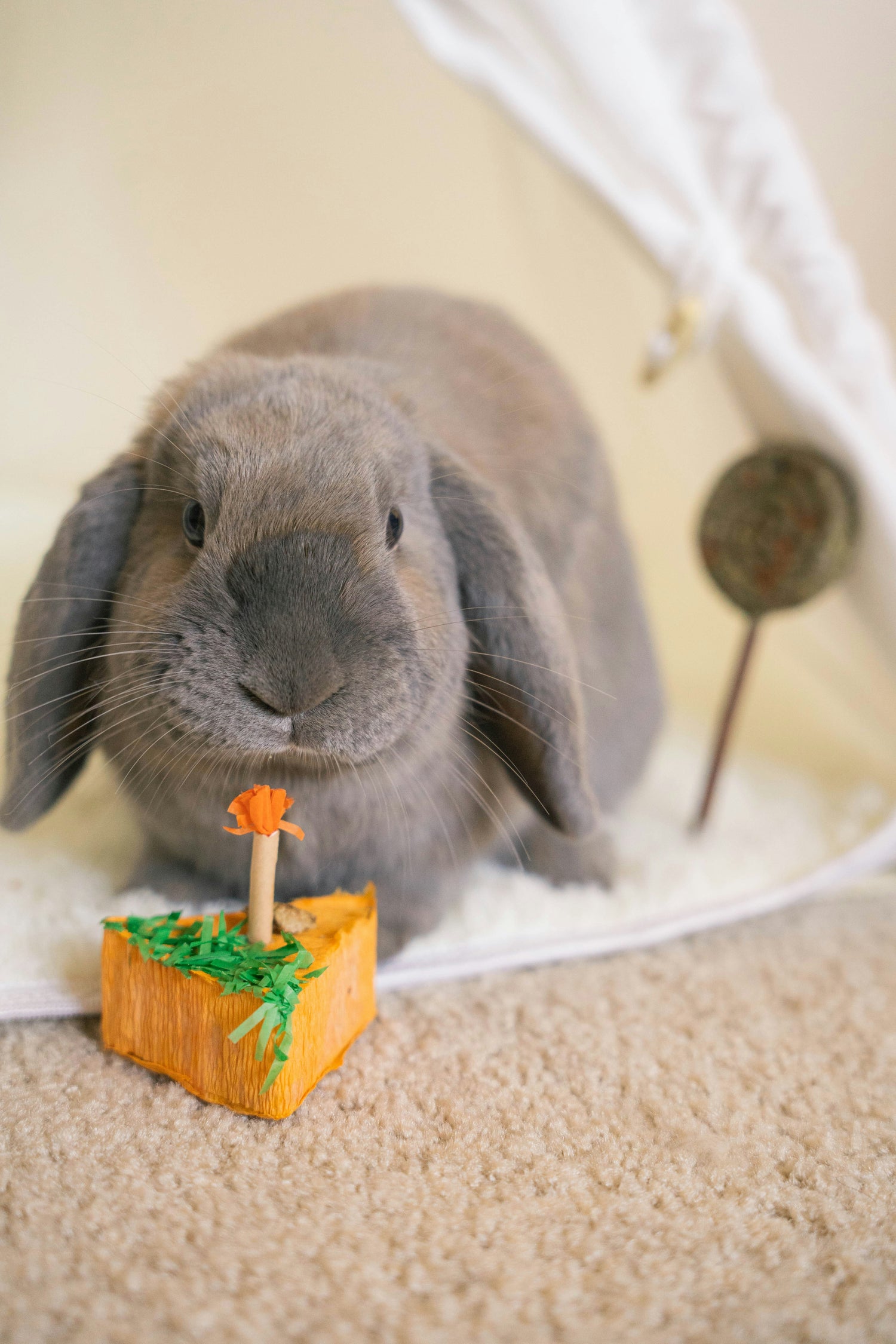
Playing & Toys
Rabbits may be small animals but they have huge personalities! It is important to provide your bunnies with a variety of different toys to improve their mental stimulation, physical exercise, and social interactions. Toys provide an outlet to display natural behaviours such as chewing, gnawing, digging, burrowing and shredding, as well as keep the mind and body active with their curious and inquisitive nature. When rabbits get bored they can display some destructive behaviours such as chewing furniture and other household items – so its best to provide them with items they CAN chew!
Toys don’t have to be expensive…. There are lots of great rabbit toys and interactive play items available which are a great addition to your rabbits home, however items such as cardboard boxes, cardboard rolls, shredded paper, stacking cups, balls, tunnels and baby toys are also great and affordable options! Hiding treats in toys can be a great way to encourage play, and creating things like ‘forage boxes’ are always an all time favourite.
It is important to rotate toys regularly or add in new toys frequently to keep your rabbit entertained and mentally stimulated
Do You Have Any Question?
If you do not find the answer to your question in our FAQ, you can send us a message by filling out the form below.

